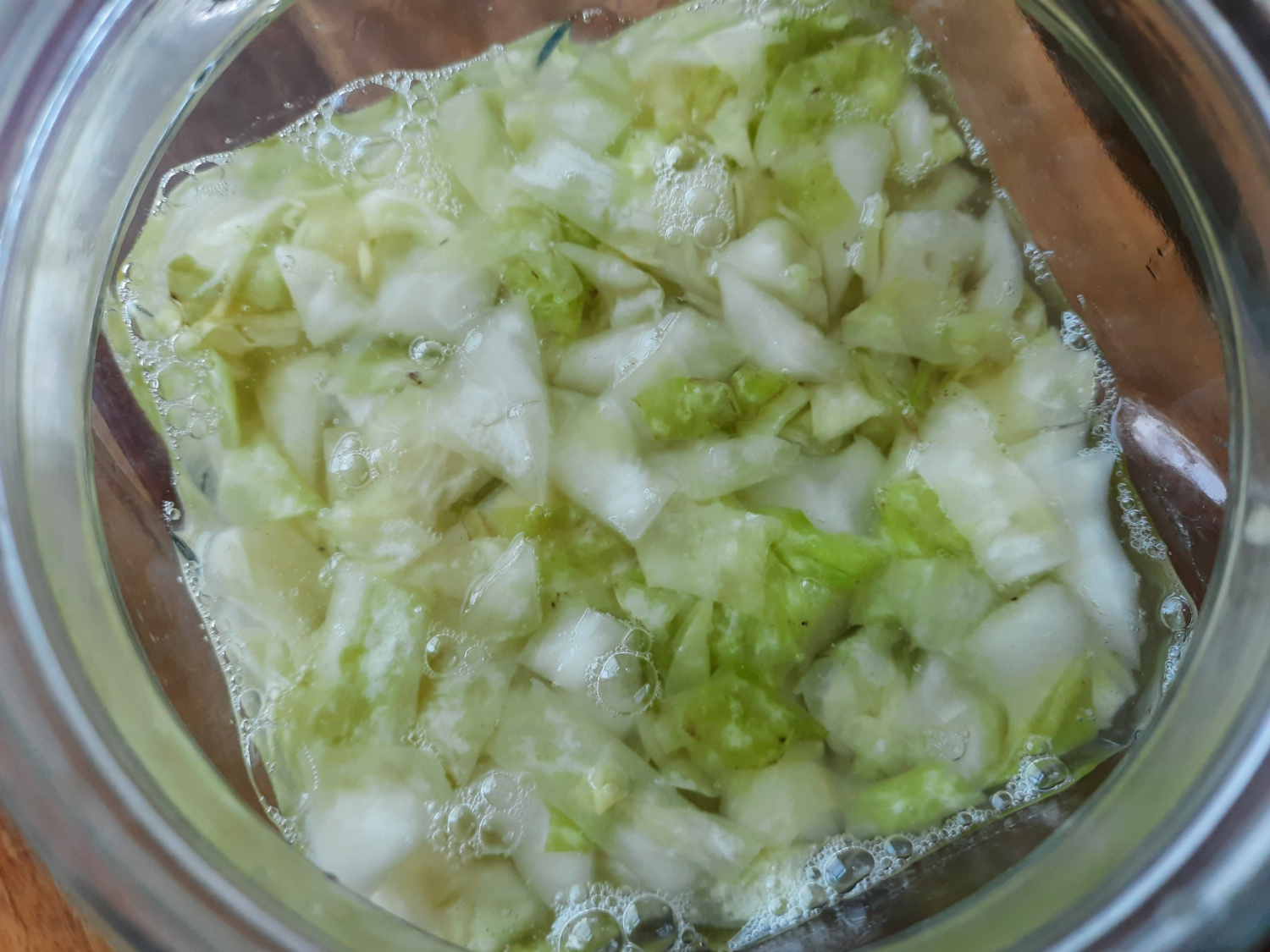Homemade Sauerkraut
How to Make Delicious and Healthy Homemade Sauerkraut

Sauerkraut, a delightful fermented cabbage dish, pairs wonderfully with both Western and Korean cuisines, and it’s surprisingly easy to make at home. The plant-based lactic acid bacteria produced during cabbage fermentation are known to survive your digestive tract robustly. Fermented cabbage is also said to aid digestion by not producing gas in the stomach and to generate anti-cancer substances.
Ingredients- 1 head of fresh cabbage (approx. 800g)
- 16g salt (about 1 Tbsp of coarse salt, like sea salt)
- 125ml water
- 0.5 Tbsp salt for seasoning (optional)
Cooking Instructions
Step 1
Start by selecting a fresh, firm head of cabbage (about 800g). Wash it thoroughly and then slice it thinly into shreds. The fresher your cabbage, the more liquid it will release during the salting process, leading to a better fermentation. Thinly sliced cabbage absorbs flavors well and has a great texture.

Step 2
Prepare salt amounting to 2% of the cabbage’s weight. For 800g of cabbage, we’ll use 16g of salt, which is a little over 1 tablespoon. Using coarse salt, such as sea salt, helps draw out moisture effectively for fermentation.

Step 3
If you have a large bowl, combine all the shredded cabbage and the prepared 16g of salt. Massage vigorously for about 10 minutes until the cabbage wilts and softens. This step is crucial for releasing the cabbage’s natural juices. If you don’t have a large bowl, work in batches: place a handful of cabbage in a smaller bowl, sprinkle a portion of the salt over it, and massage for about 4 minutes until wilted. Repeat this process with all the cabbage until it becomes tender.

Step 4
After about 4 minutes of massaging a handful of cabbage, you’ll notice that it begins to wilt and release its natural liquid. This brine is essential for the fermentation process.

Step 5
Transfer the massaged cabbage along with its released brine into a clean glass jar or crock. *This brine is the key to successful sauerkraut fermentation. The naturally occurring lactic acid bacteria in the brine will ferment the cabbage. Keeping the cabbage submerged in this brine also prevents it from being exposed to air, which can lead to spoilage and ensures it stays fresh.

Step 6
Pack the cabbage down firmly into the jar using your hands or a tamper. This will cause the brine to rise to the top, ensuring the cabbage is completely submerged.

Step 7
Since fermentation produces gas, do not seal the lid tightly. You can leave it slightly ajar or use a fermentation-specific lid. Let it ferment at room temperature for 2 days to 1 week. The fermentation time can be adjusted based on your preference for sourness. If you prefer a milder flavor, you can start enjoying it after 2 days.

Step 8
Enjoy your delicious homemade sauerkraut! When you take some out to eat, if the brine level has dropped and the cabbage is exposed to air, prepare a lightly salted brine (about 1/4 teaspoon of salt in 100ml of water) and pour it over the cabbage to keep it submerged. This helps maintain its freshness. The leftover brine is rich in probiotics, so you can even use it as a starter culture for your next batch of sauerkraut, enhancing its flavor. Enjoy!




